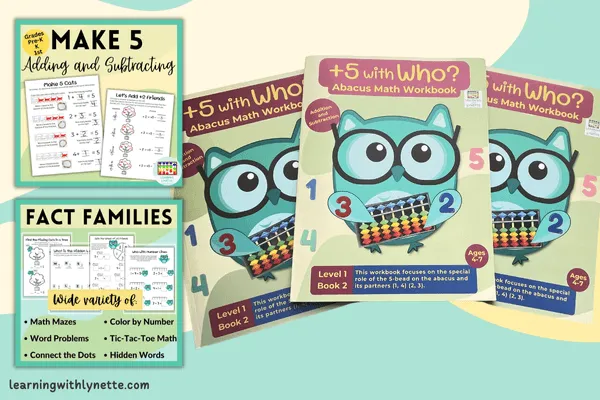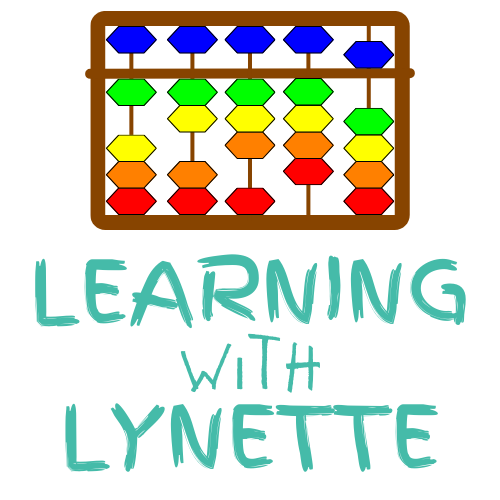
Unlocking Math Vocabulary: The Power of Fact Families and the Abacus
Learning math terminology and vocabulary has been an eye-opening experience for me. Honestly, it feels mind-blowing! After spending over 20 years with the abacus, I’m finally connecting how its methods link directly with what we learn in school. Take the concept of "fact families," for instance. Initially, I thought fact families only applied to multiplication, but it turns out they can connect to multiplication, division, addition, and subtraction! And what's truly fascinating is that the abacus method taps into fact families all the time.
Why Am I Seeing This Now?
The reason I’m making these connections now is partly due to the wealth of information available online. With the help of the internet and tools like search engine optimization (SEO), I’ve been researching more deeply—especially as I work on getting my math workbooks out to a broader audience. Sometimes I amaze myself at how much math strategies connect with the abacus that tie directly into concepts kids learn in school.
Abacus and Understanding Numbers
Once children learn how to use the abacus, they begin to understand numbers in a concrete way. Moving the beads to represent numbers makes abstract math concepts tangible. For example, 2 + 2 = 4 is demonstrated by moving two bottom beads and then adding two more bottom beads to equal four bottom beads in that column. Similarly, 5 + 2 = 7 involves one top bead (representing 5) and two bottom beads. These simple actions not only teach addition but also demonstrate decomposing numbers. albeit, it is only one way how the 7 is decomposing, but i digress. Decomposing will be in a different post.
Moving Beyond Basic Strategies
One common math strategy children learn is “doubles,” like 4 + 4 = 8. While useful, but really that is a one-hit wonder! The challenge comes when children need to add something like 5 + 4, which doesn’t fit the doubles pattern. That's where they have to manipulate the strategy, like doubles + 1.
In abacus, students have to analyze WHEN to use the top bead. In our example, the top bead is used when there aren’t enough beads to add a second or third number to the question.
This is where we use the addition fact family: 4 + 1 = 5.
Children learn that when they need to add 4, they can use the top bead, which has a value of 5. But 5 is too many on the abacus, so then they have to remove 1 bead.
So the equation is 4 = +5 - 1. This is a building block. Once this is remembered, then it can be used in different scenarios.
Building Math Flexibility: The Power of Fact Families
The beauty of this knowledge is that it’s more versatile than just relying on a strategy—"doubles.” The fact family concept, like 4 + 1 = 5, becomes a building block. Once children remember this, they can use it in various scenarios.
For instance, when adding 4 + 4, they may notice there aren't enough beads on the abacus to add another 4 directly. Instead, they use the “formula” 4 = 5 - 1. This introduces children to early algebraic thinking, showing them how to substitute numbers in an equation. It also fosters number flexibility, which is critical for developing a deeper understanding of math.
Consider the following examples:
3 + 4
2 + 4
1 + 4
In all these cases, the same principle applies: 4 = 5 - 1. This formula becomes a versatile tool they can rely on, helping them understand the fluidity of numbers. Instead of sticking to one-hit wonders like doubles, children can use strategies that adapt to different situations. The abacus helps them visualize this flexibility and internalize it over time.
Skip the One-Hit Wonders—Embrace Number Versatility
While strategies like doubles can be helpful in specific cases, they’re limited. To truly grasp math concepts and develop a flexible mindset, children need more versatile approaches.
4 = 5 - 1 is a simple but powerful concept that can be applied in many different scenarios, building confidence in children’s math skills while enhancing their understanding of fact families.
The abacus offers a hands-on way to reinforce these lessons, making math more accessible and engaging for young learners. Whether it's adding, subtracting, multiplying, or even exploring early algebra concepts, the abacus is a tool that unlocks endless possibilities.
So, don’t limit your child to one-hit wonders. Give them the tools to understand math in all its fluidity and versatility—starting with the power of fact families and the timeless wisdom of the abacus.
If you want to dive deeper into the abacus method and help your kids build strong math skills from the ground up, check out my new +5 with Who? Abacus Math Workbook by Lynette Yung. It’s full of fun activities that’ll get them excited about math, and yes, it covers everything we talked about today!
Listen to the podcast for a deep dive review of the workbook:

